A review of the effects of pharmaceutical pollutants on humans and aquatic ecosystem
The presence of high-quality water is essential not only for human survival but also for the well-being of plants and animals. This research aimed to examine studies investigating the occurrence of
[...] Read more.
The presence of high-quality water is essential not only for human survival but also for the well-being of plants and animals. This research aimed to examine studies investigating the occurrence of antibiotics, endocrine disruptors, and other pharmaceutical products in water, sediments, and organisms within aquatic ecosystems. These substances have been linked to numerous adverse health effects on both humans and aquatic life, including reproductive issues and neurotoxic effects. The pervasive utilization of antibiotics in medical and agricultural domains has precipitated their ascension as formidable environmental contaminants. Effluents discharged from pharmaceutical industries constitute significant contributors to aquatic ecosystems’ contamination with antibiotics. These pharmacological agents permeate diverse environmental niches, spanning groundwater, surface water, soils, and wastewater treatment facilities, exhibiting concentrations ranging from nanograms to grams per liter. Concurrently, the indiscriminate and excessive application of antibiotics worldwide has engendered escalating apprehensions pertaining to antimicrobial resistance—a formidable global health exigency. This review also delves into the impact of pharmaceutical pollutants on aquatic environments, particularly as endocrine-disrupting compounds. Analysis of surface water in River Taff and River Ely reveals a consistent discharge of approximately 6 kilograms of pharmaceuticals per day. The study examines particular pharmaceuticals, such as diethylstilbestrol (DES), chlorotriazines, chloroquine, and antineoplastic drugs, elucidating their varied effects on reproductive cycles. Pharmaceutical pollutants in aquatic ecosystems, originating from sources like wastewater, agriculture, and improper disposal, persist and adversely affect organisms through bioaccumulation and biomagnification. These contaminants pose significant ecological and health risks, necessitating effective mitigation strategies.
Jaya Vinny Eapen ... Jayesh Antony
The presence of high-quality water is essential not only for human survival but also for the well-being of plants and animals. This research aimed to examine studies investigating the occurrence of antibiotics, endocrine disruptors, and other pharmaceutical products in water, sediments, and organisms within aquatic ecosystems. These substances have been linked to numerous adverse health effects on both humans and aquatic life, including reproductive issues and neurotoxic effects. The pervasive utilization of antibiotics in medical and agricultural domains has precipitated their ascension as formidable environmental contaminants. Effluents discharged from pharmaceutical industries constitute significant contributors to aquatic ecosystems’ contamination with antibiotics. These pharmacological agents permeate diverse environmental niches, spanning groundwater, surface water, soils, and wastewater treatment facilities, exhibiting concentrations ranging from nanograms to grams per liter. Concurrently, the indiscriminate and excessive application of antibiotics worldwide has engendered escalating apprehensions pertaining to antimicrobial resistance—a formidable global health exigency. This review also delves into the impact of pharmaceutical pollutants on aquatic environments, particularly as endocrine-disrupting compounds. Analysis of surface water in River Taff and River Ely reveals a consistent discharge of approximately 6 kilograms of pharmaceuticals per day. The study examines particular pharmaceuticals, such as diethylstilbestrol (DES), chlorotriazines, chloroquine, and antineoplastic drugs, elucidating their varied effects on reproductive cycles. Pharmaceutical pollutants in aquatic ecosystems, originating from sources like wastewater, agriculture, and improper disposal, persist and adversely affect organisms through bioaccumulation and biomagnification. These contaminants pose significant ecological and health risks, necessitating effective mitigation strategies.
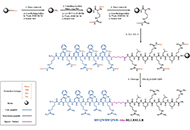 Hybrid peptides inspired by the RWQWRWQWR sequence inhibit cervical cancer cells growth in vitroOpen AccessOriginal ArticleAim: The aim of this research was to generate new peptide molecules with cytotoxic activity against cervical cancer that can become effective in mitigating the impact of the disease and preventin [...] Read more.Natalia Ardila-Chantré ... Javier Eduardo García-CastañedaPublished: September 27, 2024 Explor Drug Sci. 2024;2:614–631
Hybrid peptides inspired by the RWQWRWQWR sequence inhibit cervical cancer cells growth in vitroOpen AccessOriginal ArticleAim: The aim of this research was to generate new peptide molecules with cytotoxic activity against cervical cancer that can become effective in mitigating the impact of the disease and preventin [...] Read more.Natalia Ardila-Chantré ... Javier Eduardo García-CastañedaPublished: September 27, 2024 Explor Drug Sci. 2024;2:614–631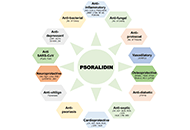 Psoralidin: emerging biological activities of therapeutic benefits and its potential utility in cervical cancerOpen AccessReviewCervical cancer (CaCx) is the fourth most prevalent cancer in women contributing to 341,831 annual deaths globally in 2020. Owing to its high mortality rate, the identification of novel inhibitors p [...] Read more.Tanya Tripathi ... Alok Chandra BhartiPublished: September 24, 2024 Explor Drug Sci. 2024;2:583–613
Psoralidin: emerging biological activities of therapeutic benefits and its potential utility in cervical cancerOpen AccessReviewCervical cancer (CaCx) is the fourth most prevalent cancer in women contributing to 341,831 annual deaths globally in 2020. Owing to its high mortality rate, the identification of novel inhibitors p [...] Read more.Tanya Tripathi ... Alok Chandra BhartiPublished: September 24, 2024 Explor Drug Sci. 2024;2:583–613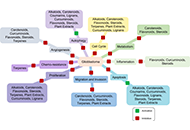 Multi-target and natural product-based multi-drug approach for anti-VEGF resistance in glioblastomaOpen AccessReviewGlioblastoma (GBM) remains a formidable challenge in neuro-oncology due to its aggressive nature and propensity for therapeutic resistance. Anti-vascular endothelial growth factor (VEGF) therapies, [...] Read more.Sasikumar Jalajakumari Soumya ... Perumana R. SudhakaranPublished: September 13, 2024 Explor Drug Sci. 2024;2:567–582
Multi-target and natural product-based multi-drug approach for anti-VEGF resistance in glioblastomaOpen AccessReviewGlioblastoma (GBM) remains a formidable challenge in neuro-oncology due to its aggressive nature and propensity for therapeutic resistance. Anti-vascular endothelial growth factor (VEGF) therapies, [...] Read more.Sasikumar Jalajakumari Soumya ... Perumana R. SudhakaranPublished: September 13, 2024 Explor Drug Sci. 2024;2:567–582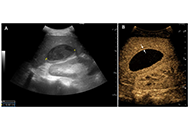 Clinical utility of combined contrast-enhanced ultrasound and intracavitary contrast-enhanced ultrasound in the percutaneous treatment of pyogenic liver abscessOpen AccessOriginal ArticleAim: This study aimed to evaluate the utility of the combined use of contrast-enhanced ultrasound (CEUS) and intracavitary CEUS (IC-CEUS) with diluted SonoVue in the management of percutaneous tr [...] Read more.Giampiero FrancicaPublished: September 13, 2024 Explor Drug Sci. 2024;2:555–566
Clinical utility of combined contrast-enhanced ultrasound and intracavitary contrast-enhanced ultrasound in the percutaneous treatment of pyogenic liver abscessOpen AccessOriginal ArticleAim: This study aimed to evaluate the utility of the combined use of contrast-enhanced ultrasound (CEUS) and intracavitary CEUS (IC-CEUS) with diluted SonoVue in the management of percutaneous tr [...] Read more.Giampiero FrancicaPublished: September 13, 2024 Explor Drug Sci. 2024;2:555–566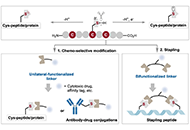 Chemo-selective modification of cysteine residue: synthesis and application in the discovery of potential drug candidatesOpen AccessReviewChemo-select modification of peptides, targeting a handful of the most reactive proteinogenic amino acids (AAs), is gradually utilized to address the medical needs of peptide drugs and biopharmaceut [...] Read more.Yanyan Liao, Xuefeng JiangPublished: September 06, 2024 Explor Drug Sci. 2024;2:540–554
Chemo-selective modification of cysteine residue: synthesis and application in the discovery of potential drug candidatesOpen AccessReviewChemo-select modification of peptides, targeting a handful of the most reactive proteinogenic amino acids (AAs), is gradually utilized to address the medical needs of peptide drugs and biopharmaceut [...] Read more.Yanyan Liao, Xuefeng JiangPublished: September 06, 2024 Explor Drug Sci. 2024;2:540–554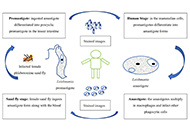 A review of leishmaniasis: current knowledge and future directions of heterocyclic moleculesOpen AccessReviewLeishmanial diseases, caused by various species of the protozoan parasite Leishmania, continue to pose a significant global health challenge. Medicinal drugs have been at the forefront of combating [...] Read more.Tejaswini Masne ... Deepali BansodePublished: September 06, 2024 Explor Drug Sci. 2024;2:508–539
A review of leishmaniasis: current knowledge and future directions of heterocyclic moleculesOpen AccessReviewLeishmanial diseases, caused by various species of the protozoan parasite Leishmania, continue to pose a significant global health challenge. Medicinal drugs have been at the forefront of combating [...] Read more.Tejaswini Masne ... Deepali BansodePublished: September 06, 2024 Explor Drug Sci. 2024;2:508–539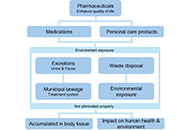 A review of the effects of pharmaceutical pollutants on humans and aquatic ecosystemOpen AccessReviewThe presence of high-quality water is essential not only for human survival but also for the well-being of plants and animals. This research aimed to examine studies investigating the occurrence of [...] Read more.Jaya Vinny Eapen ... Jayesh AntonyPublished: August 28, 2024 Explor Drug Sci. 2024;2:484–507
A review of the effects of pharmaceutical pollutants on humans and aquatic ecosystemOpen AccessReviewThe presence of high-quality water is essential not only for human survival but also for the well-being of plants and animals. This research aimed to examine studies investigating the occurrence of [...] Read more.Jaya Vinny Eapen ... Jayesh AntonyPublished: August 28, 2024 Explor Drug Sci. 2024;2:484–507 Biological activities of extracts of some plants which utilized in coldsOpen AccessOriginal ArticleAim: In this study, antioxidant activities and antibacterial activities of acetone and chloroform extracts obtained from Rosa canina, Echinacea purpurea, Althaea officinalis and [...] Read more.Sinem AydinPublished: August 22, 2024 Explor Drug Sci. 2024;2:473–483
Biological activities of extracts of some plants which utilized in coldsOpen AccessOriginal ArticleAim: In this study, antioxidant activities and antibacterial activities of acetone and chloroform extracts obtained from Rosa canina, Echinacea purpurea, Althaea officinalis and [...] Read more.Sinem AydinPublished: August 22, 2024 Explor Drug Sci. 2024;2:473–483